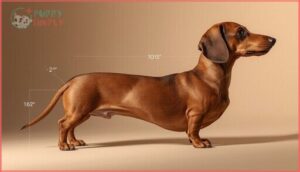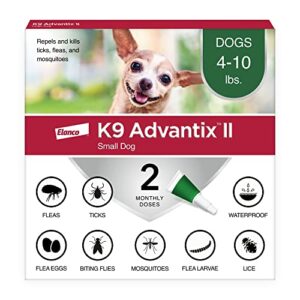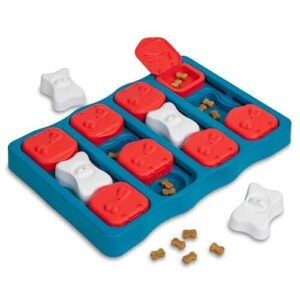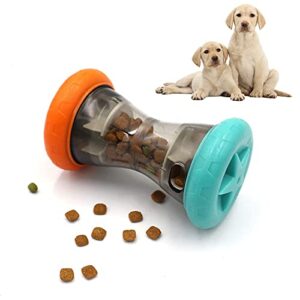This site is supported by our readers. We may earn a commission, at no cost to you, if you purchase through links.
Those stubby legs and soulful eyes may look adorable, but mini dachshunds pack the heart of a fearless hunter into a body you can tuck under your arm. Originally bred to dive headfirst into badger dens in 16th-century Germany, these pint-sized dogs still think they’re ten feet tall and bulletproof.
That bold attitude makes them endlessly entertaining companions, but it also means you’re signing up for a dog who’ll ignore your commands if they don’t see the point, bark at strangers twice their size, and potentially face serious back problems if you let them jump off furniture.
Understanding what makes mini dachshunds tick—from their prey-driven personalities to their unique health needs—helps you give them the life they deserve while avoiding the pitfalls that catch unprepared owners off guard.
Table Of Contents
- Key Takeaways
- What Are Mini Dachshunds?
- Mini Dachshund Personality and Temperament
- Training and Socializing Your Mini Dachshund
- Mini Dachshund Health and Care
- Intervertebral Disc Disease (IVDD) Prevention
- Weight Management and Obesity Prevention
- Exercise Requirements and Activity Needs
- Diet and Nutrition Guidelines
- Grooming Needs by Coat Type
- Dental Care and Regular Vet Check-ups
- Lifespan and Longevity Expectations
- Home Safety and Back Injury Prevention
- Pet Insurance Considerations
- Top Products for Mini Dachshund Owners
- Frequently Asked Questions (FAQs)
- What are the common health problems in mini Dachshunds?
- How often should I brush a mini Dachshund’s coat?
- How can I prevent my mini Dachshund from chasing other animals?
- What is the recommended diet for a mini Dachshund to prevent obesity?
- Do mini dachshunds get along with other pets?
- How much do mini dachshund puppies cost?
- Are mini dachshunds good for apartment living?
- Can mini dachshunds be left alone during work?
- What are common behavioral problems in mini dachshunds?
- Conclusion
Key Takeaways
- Mini dachshunds face a 29.9% risk of intervertebral disc disease (IVDD)—up to 12 times higher than other breeds—making ramps, weight control, and avoiding jumps critical for protecting their vulnerable spines.
- These fearless hunters pack bold personalities into 11-pound bodies, but their stubborn streak means they’ll ignore commands they don’t see the point of and need 25% more training repetitions than most breeds.
- Early socialization between 3-12 weeks is non-negotiable, as missing this window leads to a 72% higher chance of behavioral issues like excessive barking, separation anxiety, and aggression toward strangers.
- Proper care requires just 400 calories daily split into measured meals, 30-60 minutes of daily low-impact exercise, and coat-specific grooming ranging from weekly brushing for smooth coats to daily attention for longhaired types.
What Are Mini Dachshunds?
If you’ve ever seen a low-riding dog with a long body and big personality trotting down the street, you’ve probably spotted a mini dachshund. These little dogs pack serious charm into a compact frame, and they’ve been winning hearts for centuries.
Let’s break down what makes mini dachshunds unique, from their fascinating origins to their distinctive looks.
Breed History and Origin
The Mini Dachshund’s German roots trace back centuries, with ancient ancestry reflected in Egyptian engravings from 2000 BCE. Here’s what shaped this beloved breed:
- Hunting Purpose: Bred in 1800s Germany to chase rabbits through narrow burrows
- Breed Development: Created by crossing standard Dachshunds with smaller breeds like Miniature Pinschers
- Kennel Recognition: The AKC officially recognized the Dachshund breed in 1885
- Modern Status: Now ranked 6th in AKC registrations
Mini Dachshunds were initially bred to hunt, specifically targeting small game and rabbits.
Size and Weight Standards
When you bring home one of these tiny hunters, understanding the AKC breed standard helps you know what’s typical. Miniature Dachshunds should weigh no more than 11 pounds as adults, standing just 5–6 inches at the shoulder. The FCI chest circumference standard measures 30–37 cm at 15 months. A healthy weight is important because they’re prone to back problem susceptibility.
Here’s how your Mini Doxie grows:
| Age | Expected Weight | Development Stage |
|---|---|---|
| 3 months | 5–6 pounds | Rapid growth phase |
| 6 months | 8–9 pounds | Nearing adult size |
| 12 months | 9–11 pounds | Ideal adult weight reached |
Growth timeline varies slightly between pups, but most reach their full size by their first birthday. Size discrepancies beyond these ranges might indicate your Mini Dachshund is actually standard-sized—which is perfectly fine, just different than expected!
Physical Appearance and Body Structure
Beyond weight, your Mini Dachshund’s physical characteristics are instantly recognizable. Their elongated body—twice as long as they’re tall—creates that iconic “sausage dog” silhouette. Here’s what makes their structure unique:
- Body Proportions: Level back with slightly arched loin, plus ground clearance of at least one-quarter their shoulder height
- Facial Features: Long, muscular neck flowing into oblique shoulders; almond-shaped eyes showing intelligence
- Thoracic Features: Deep, oval chest extending to mid-forearm, housing essential organs with ample capacity
Their compact feet and muscular hindquarters were built for digging—originally bred to hunt badgers underground!
Coat Types (Smooth, Wire-Haired, Long-Haired)
Your Mini Dachshund’s coat comes in three official varieties: smooth, wirehaired, and longhaired.
Smooth coats shine with minimal grooming needs, shedding modestly year-round. Wirehaired types sport rough, weather-resistant fur with adorable facial furnishings—perfect for outdoor adventures. Longhaired Dachshunds feature silky, flowing feathers that require regular brushing to prevent tangles.
Each coat type has unique origins and maintenance requirements, affecting your grooming routine and care approach.
Color and Pattern Varieties
The palette of Mini Dachshund colors dazzles with 15 AKC-recognized shades—from classic black-and-tan to cream, chocolate, and the rarest solid black. Dapple and piebald patterns add flair, but double dapple combinations carry health risks like deafness.
Blue and isabella hues, while commanding premium market value, stem from dilution genes linked to skin issues. Choose wisely—beauty shouldn’t compromise your pup’s wellbeing.
Differences Between Standard and Miniature Dachshunds
The size comparison is dramatic—Standard Dachshunds hit 16–32 pounds while Mini Doxies max out at 11. Temperament traits? Miniatures tend to be feistier and more vocal; standards skew calmer.
Health risks like IVDD strike both, but minis face higher rates in some studies. Lifespan variance is murky—data shows standards averaging 11.2 years versus 10.2 for miniatures, flipping conventional wisdom about smaller dogs living longer.
Mini Dachshund Personality and Temperament
If you’ve ever met a mini Dachshund, you know they’re anything but ordinary. These pint-sized pups pack more personality per pound than just about any breed out there.
Let’s break down what makes their temperament so special—and sometimes wonderfully challenging.
Bold and Confident Nature
If you’re looking for a lap dog who knows their place, a Mini Dachshund isn’t it. These pint-sized powerhouses embody fearless behavior and assertive traits that’ll surprise you—think big-dog attitude in a tiny package.
Their bold Dachshund temperament includes:
- Social Confidence: 85% confidently greet strangers and other dogs
- Independent Nature: bred to hunt alone, they make decisions without hesitation
- Risk-Taking: their strong prey drive fuels fearless exploration
This Mini Dachshund personality means you’re getting a courageous companion who acts “bigger than their size.
Loyalty and Family Bonding
Your Mini Dachshund will likely become a velcro dog, following you everywhere and forming intense attachment styles with their primary caregiver. Over 80% show separation anxiety when their favorite person leaves.
They excel at pet companionship and child interactions when socialized early, displaying protective behaviors like barking at strangers.
This affection runs deep, making them devoted members of dog families who crave constant closeness.
Stubbornness and Strong-Willed Behavior
Think of your miniature dachshund as a pocket-sized CEO—they’ve got strong opinions about everything. Dachshund behavior traits include selective obedience, with these smart but hard-to-train dogs ignoring 40% of commands initially.
Mini dachshund behavior involves command refusal, routine control, and persistent behavioral problems. Training challenges require patience, as they’ll need 25% more repetitions than other breeds to master basic dachshund training tips.
Selective Affection and Territorial Tendencies
Your miniature dachshund’s bonding preferences run deep—up to 70% attach strongest to one person. These dachshund behavior traits include space guarding of beds and sofas, with resource protection showing in 15% of cases.
Dog behavior like this stems from their hunting heritage. Smooth coats display the most territorial tendencies, while routine impact matters hugely.
Early socialization patterns during those important first six months shape your mini dachshund behavior and temperament forever.
Intelligence and Learning Ability
That territorial streak pairs with surprising smarts—miniature dachshunds rank 92nd out of 138 breeds for trainability factors, yet their adaptive intelligence shines in problem-solving. Your pup masters basic commands after 25–40 repetitions, responding correctly about 50% of the time initially.
This miniature dachshund temperament reflects their hunting past: they’re clever enough to outsmart you, which makes training miniature dachshunds rewarding but occasionally frustrating. Their cognitive abilities demand creative, positive reinforcement approaches.
Prey Drive and Hunting Instincts
Those clever brains evolved for serious work—miniature dachshunds were bred for hunting badgers and rabbits in 17th-century Germany, creating a powerful prey drive that persists today. Watch your badger dog track a squirrel: genetic predisposition meets reality.
Expect these instinct manifestations:
- Chasing moving targets beyond 100 meters
- Digging through carpets (40% of owners report this)
- Barking at 90 decibels during hunts
- Stalking wildlife for 50–70 minutes daily
- Escape attempts near fences (30% try)
Wire-haired varieties show 20% higher hunting intensity. The household impact? Multi-pet homes face chase incidents in 55–65% of cases.
Mitigation techniques work: early socialization reduces unwanted behaviors by 40%, while puzzle toys decrease digging by 30%. Breed variability matters—males display 10–15% stronger drive than females.
Training and Socializing Your Mini Dachshund
Training a mini dachshund isn’t rocket science, but it does require patience and the right approach. These little dogs are smart and stubborn in equal measure, which means you’ll need to stay one step ahead.
Let’s walk through the key strategies that’ll help you raise a well-behaved, confident companion.
Early Socialization Importance
Regarding miniature dachshunds, early socialization isn’t optional—it’s essential. There’s a critical window between 3 and 12 weeks when your puppy’s brain is most receptive to new experiences.
Miss this period, and you’re looking at a 72% higher chance of behavioral issues down the road. Proper puppy care during these weeks shapes everything from dog behavior to how well your dog training sticks later on.
Positive Reinforcement Training Methods
Once you’ve laid that social foundation, positive reinforcement becomes your secret weapon. Dogs trained with treats or praise hit a 90% recall success rate—punishment-based methods? Only 30-50%.
Your mini dachshund training works best when you focus on reinforcement frequency and treat reward timing. Play-based training and stroking effectiveness matter just as much as food rewards. This approach builds compliance rates while strengthening your bond.
Potty Training Challenges and Solutions
While positive reinforcement builds compliance, potty training dachshunds presents unique challenges. Their stubbornness factors extend training duration to 4–6 months for most miniature dachshunds.
Accident frequency spikes with routine changes—like moving potty pads or weather shifts.
Your remediation strategies matter: establish fixed intervals, use enzymatic cleaners on repeat spots, and stay consistent. These potty training tips reduce accidents by up to 50% when you stick with them.
Basic Obedience Training
You’ll want to start early training around 8 weeks—short, 5–10 minute sessions work best for miniature dachshunds with fleeting attention spans. Positive reinforcement methods deliver 33% higher success rates than punishment-based approaches.
Common challenges include selective listening and stubborn refusals, but daily practice with 12–15 repetitions per command builds reliability. Class attendance before 19 weeks boosts obedience training outcomes considerably.
Leash Training Techniques
Because their elongated spine makes chest plate vs collar choice critical, front-clip chest plates reduce pulling by 50–60% while protecting mini dachshunds from neck strain. Equipment safety matters tremendously for preventing back injuries during dog socialization walks.
Start leash training for dogs at 8 weeks with 5–10 minute sessions using positive reinforcement—treats and praise work wonders. Expect 3–4 weeks for basic dog training progress, though reactivity management and stubborn streaks may extend the timeline.
Managing Barking and Vocal Behavior
Mini Dachshunds bark—it’s in their DNA. You’ll hear 20+ rapid barks when they spot “intruders,” plus excited yips and attention-seeking whines. Mini Smooth and Wire types bark less than Longhairs, who’re more noise-sensitive.
Combat boredom barking with 20-30 minute daily walks and puzzle toys. Ignore attention barking, reward quiet moments—you’ll see 40% fewer vocal outbursts within two weeks using consistent positive reinforcement.
Mini Dachshund Health and Care
Taking care of a mini dachshund means protecting that long back and keeping your pup healthy for years to come.
These little dogs have specific needs that go beyond the basics, from preventing spinal issues to managing their weight and energy levels.
Let’s walk through what you need to know to keep your mini dachshund happy, healthy, and thriving.
Intervertebral Disc Disease (IVDD) Prevention
That long, low back you adore? It’s also your mini dachshund’s biggest vulnerability. Miniature Smooth Haired Dachshunds face a staggering 29.9% IVDD risk—10 to 12 times higher than other breeds.
That adorable long back is also your mini dachshund’s Achilles’ heel—they face a 29.9% IVDD risk, up to 12 times higher than other breeds
Here’s how you can protect your pup’s back health:
- Use a body sling instead of a collar to reduce spinal pressure during walks
- Install ramps or steps for furniture and car access
- Maintain daily exercise over 30 minutes to strengthen supporting muscles
- Consider genetic screening to assess your dog’s individual IVDD risk
- Explore physical therapy options like hydrotherapy for preventive spinal support
Weight management plays a significant role too, since extra pounds intensify stress on those delicate discs.
Weight Management and Obesity Prevention
Your mini dachshund needs just 400 calories daily—about three quarter-cup kibble meals. Overfeeding even slightly leads to rapid weight gain, doubling the risk of spinal support problems and joint health issues. Obesity in miniature dachshunds shortens lifespan by up to two years.
Stick to strict calorie control, skip table scraps, and weigh your dog monthly to catch problems early.
Exercise Requirements and Activity Needs
Keeping your pup lean means nothing without daily movement to match. Your mini dachshund needs 30–60 minutes of exercise each day to build the core muscles that protect that long spine. Think short walks, gentle fetch, and sniff games—not marathons or agility courses.
- Two or three short walks beat one long trek for back safety
- Body strap over collar protects neck and spine during activity
- Puzzle toys and scent games satisfy hunting instincts while burning mental energy
- Skip the jumping and stairs to avoid vertebral stress and injury
Regular activity cuts IVDD risk while keeping weight down and spirits up.
Diet and Nutrition Guidelines
What you feed your miniature dachshund matters as much as how much you move them. Adults need 180–250 calories daily—roughly ½ to ¾ cup of quality kibble split into two meals. Look for formulas with 29–31% protein and 15–17% fat to fuel muscle without packing on pounds. Watch for food allergens like corn, wheat, and soy that trigger itching or upset stomachs.
Senior diets drop to 180–210 calories as activity slows. Supplementation needs may include omega-3s for joints—always check with your vet first.
Grooming Needs by Coat Type
Grooming varies wildly between coat types in miniature dachshunds. Smooth-coat grooming means weekly brushing—that’s it. Longhaired pups need daily attention to dodge mats, plus trimming every 4–6 weeks. Wirehaired care requires hand-stripping dead hair every 2–3 months to keep texture intact.
Seasonal shedding ramps up in spring and fall for long-hair maintenance, while senior dog grooming demands gentler, shorter sessions as tolerance drops.
Dental Care and Regular Vet Check-ups
Beyond coat care, dog teeth demand your attention. Brushing techniques like gentle circular strokes three times weekly can slash disease risk—80% of dogs over three show dental issues.
Cleaning costs run $300–$2,000 annually, but skipping them invites systemic risks like heart damage. Annual exams catch problems early.
Disease prevention starts at home, keeping your miniature dachshund’s smile—and health—intact.
Lifespan and Longevity Expectations
Your miniature dachshund’s lifespan generally stretches 12–16 years, though recent UK data showed a median of 10.5 years. Five factors shape longevity:
- IVDD impact — this genetic predisposition affects 15–30% of the breed
- Weight control — obesity compounds spinal stress
- Preventive care — regular vet visits catch issues early
- Quality life — mental stimulation aids healthy aging
- Early intervention — timely treatment preserves mobility
Dog lifespan depends on you managing breed-specific mini dachshund health issues through proper mini dachshund diet and nutrition.
Home Safety and Back Injury Prevention
Around 25% of miniature dachshunds will face intervertebral disc disease, so dachshundproofing your home isn’t optional—it’s essential dachshund home safety.
Start with safe flooring like non-slip mats on stairs and tile. Add ramps for furniture access and master proper lifting techniques: one hand under the chest, one supporting the rear.
Block stairs with baby gates, remove electrical cords, and supervise play to prevent physical trauma from jumping.
Pet Insurance Considerations
Should you insure your mini dachshund? Given IVDD treatment costs $3,000 to $15,000, pet insurance makes financial sense for this breed.
Average premium costs run $34 to $51 monthly for miniature dachshunds, but watch for policy exclusions—some insurers exclude IVDD as hereditary.
Compare breed-specific plans carefully, checking that dachshund health issues like back problems are covered before signs appear.
Top Products for Mini Dachshund Owners
Raising a mini dachshund comes with unique challenges, from protecting that long back to keeping that clever mind entertained.
The right products can make a real difference in your pup’s health, happiness, and training success. Here are four standout items that address the specific needs of mini dachshund owners.
1. Complete Guide to Dachshund Puppies
Ever wonder how to raise a Miniature Dachshund puppy that’s healthy, happy, and well-mannered? The Complete Guide to Dachshund Puppies is packed with practical advice on growth milestones, nutritional needs, and puppy care.
You’ll find tips for managing the socialization window, mastering potty training, and understanding breed standards. Training consistency is key—especially with strong-willed puppies!
Whether you’re new or seasoned, this guide helps you support your Miniature Dachshund’s development from playful pup to cherished companion.
Best For: New and experienced Dachshund owners who want expert guidance on raising a healthy, well-trained miniature Dachshund from puppyhood through adulthood.
- Covers essential breed-specific topics like spine protection, growth milestones, and the socialization window between 8-12 weeks when puppies are most receptive to training.
- Includes interviews with 5 top Dachshund breeders, offering real-world insights and expert advice you won’t find in generic dog care books.
- Provides detailed nutritional guidelines with specific protein and fat percentages needed during growth and adulthood, plus a comprehensive list of required vitamins and minerals.
- Some readers found the content to be fairly basic or common sense, making it less useful for experienced dog owners seeking advanced techniques.
- Contains at least one notable error—a chart about Boston Terriers mistakenly included in a Dachshund-focused guide, which raises questions about editing quality.
- Lacks depth in certain areas, with some reviewers noting it could use more breed-specific tips and tricks beyond general puppy care advice.
2. K9 Advantix II Small Dog Flea
Protecting your miniature dachshund from fleas and ticks shouldn’t feel like a gamble. K9 Advantix II delivers proven results, killing 98–100% of fleas within 12 hours and maintaining efficacy for four weeks.
Its active ingredients—imidacloprid, permethrin, and pyriproxyfen—work together to repel mosquitoes and ticks too.
Application safety is straightforward: apply monthly to dogs over seven weeks old, and keep cats away for 24 hours. Most mini dachshunds tolerate it well, though mild skin irritation occurs in 2–5% of cases.
It’s a veterinarian-trusted choice for thorough small dog parasite protection.
Best For: Small dog owners who need a broad-spectrum, monthly topical treatment that kills fleas fast and repels multiple parasites without a prescription.
- Kills 98–100% of fleas within 12 hours and maintains protection for a full month with just one application.
- Offers multi-parasite defense against fleas, ticks, mosquitoes, biting flies, and lice, reducing disease transmission risk.
- No prescription required and waterproof after 24 hours, making it convenient for active dogs.
- Must keep cats away for 24 hours after application since the formula can be toxic to felines.
- Mild skin irritation occurs in 2–5% of dogs at the application site.
- Some users report it can be pricier than alternatives found at local pet stores.
3. Outward Hound Dog Brick Puzzle Toy
Your mini dachshund’s sharp mind needs regular exercise just like their body does. The Outward Hound Dog Brick Puzzle Toy delivers exactly that—mental stimulation through treat hiding options that challenge problem-solving skills.
At around $10–$32, it’s an affordable investment in cognitive skill boost and playfulness. The puzzle toys engage your pup for 10–15 minutes per session, reducing boredom-driven mischief.
Just remember: durability and safety require supervision since miniature dachshunds can chew thin plastic pieces. User experience reviews consistently praise its multiple challenge levels and easy cleanup.
Best For: Small dog owners looking for an affordable way to keep their mini dachshund mentally stimulated and entertained while slowing down eating or reducing anxiety-driven behaviors.
- Offers multiple challenge levels with flip lids, sliding panels, and removable bones, keeping dogs engaged for 10-15 minutes per session
- Made from food-safe, non-toxic materials with a rubberized bottom that prevents slipping during play
- Extremely affordable at $10-$32, making it easy to replace if damaged and accessible for most budgets
- Not suitable for aggressive chewers as thin plastic lids and removable pieces can be chewed or damaged over time
- Requires constant supervision since small parts pose an ingestion risk if removed during play
- Some highly intelligent dogs may solve the puzzle too quickly, reducing long-term challenge and engagement
4. Aelflane Treat Dispensing Dog Puzzle Toy
For around $13, the Aelflane Treat Dispensing Dog Puzzle Toy offers slow feeding benefits through its barbell-shaped design—perfect for miniature dachshunds prone to gobbling meals too fast.
The ABS plastic and soft rubber construction provides toy material safety, while the disassemblable design makes cleaning and maintenance simple.
Your mini dachshund gets a cognitive skill boost as they roll and nudge for rewards, keeping them entertained for 30 minutes or more.
Just watch for durability concerns with aggressive chewers, and supervise playtime in your mini Doxie home.
Best For: Mini dachshund owners looking for a budget-friendly slow feeder that doubles as mental stimulation and keeps their pup entertained for 30+ minutes at a time.
- Slows down fast eaters with a controlled treat-dispensing design that helps prevent bloat and improves digestion.
- Easy to clean with a detachable design, and made from non-toxic ABS plastic and soft rubber that’s safe for your dog.
- Keeps dogs mentally engaged and entertained, with most pups staying focused for 30 minutes to 2 hours per session.
- Not durable enough for aggressive chewers and can break under heavy use.
- Some dogs figure out how to open it too easily, making treat dispensing less challenging over time.
- Can be messy if it dispenses too much food at once, and requires supervision during playtime.
Frequently Asked Questions (FAQs)
What are the common health problems in mini Dachshunds?
Imagine this: a tiny hot dog with legs, strutting around like they own the place—until back pain strikes.
IVDD prevention, obesity risks, dental disease, patellar luxation, and PRA screening top miniature Dachshund health concerns.
How often should I brush a mini Dachshund’s coat?
Your mini Dachshund’s coat type determines brushing frequency. Smooth coats need weekly brushing, long-haired types require daily attention to prevent matting, and wire-haired coats benefit from several brushings per week plus occasional hand-stripping.
How can I prevent my mini Dachshund from chasing other animals?
Use leash training and recall commands consistently to manage your miniature dachshund’s strong prey drive.
Early dog socialization helps, but dog breeds with hunting instincts need safe spaces and positive dog temperament management daily.
What is the recommended diet for a mini Dachshund to prevent obesity?
Feed a high-quality diet with 22–30% protein and 8–12% fat. Follow caloric guidelines of 200–300 kcal daily, served in two measured meals. Choose ingredient quality carefully to support weight management.
Do mini dachshunds get along with other pets?
Mini Dachshunds can get along with other pets through early socialization and breed compatibility awareness. Their prey drive requires behavioral management, especially with cats. Proper introductions help these very social dogs coexist peacefully.
How much do mini dachshund puppies cost?
Expect to pay $1,200 to $3,500 from reputable breeders, with coat rarity and breeder reputation driving prices higher. Adoption fees run $150 to $ Don’t forget hidden costs like vet bills and supplies.
Are mini dachshunds good for apartment living?
Studies show 78% of apartment owners rate mini dachshunds as “good” or “excellent” companions. These small dog breeds adapt well to compact spaces, though you’ll need to manage barking, provide exercise indoors, and prioritize injury prevention.
Can mini dachshunds be left alone during work?
Yes, but not all day. Adult mini dachshunds shouldn’t be alone longer than 4-6 hours. Their small bladders and separation anxiety risks make midday breaks essential for working owners.
What are common behavioral problems in mini dachshunds?
Excessive barking, separation anxiety, and potty training struggles top the list.
These little dogs can also show aggression toward strangers, territorial behavior, and fearfulness—especially without early socialization and consistent training.
Conclusion
Mini dachshunds carry the same fearless spirit that sent them underground centuries ago—and that’s exactly what makes them both challenging and unforgettable.
Knowing mini dachshunds everything you could want to know means accepting their stubbornness alongside their loyalty, protecting those vulnerable backs while celebrating their outsized personalities.
They’re not the easiest breed, but for owners who embrace their quirks and commit to their care, these tenacious little dogs deliver a lifetime of devoted companionship that’s genuinely one-of-a-kind.
- https://sitmeanssit.com/dog-training-mu/anthem-dog-training/mini-dachshunds-a-full-guide/
- https://articles.hepper.com/miniature-dachshund-lifespan-how-long-do-they-live/
- https://en.wikipedia.org/wiki/Dachshund
- https://www.dachshundhealth.org.uk/welcome/how-long-do-dachshunds-live-vetcompass-data
- https://www.ufaw.org.uk/dogs/dachshund-intervertebral-disc-disease




















